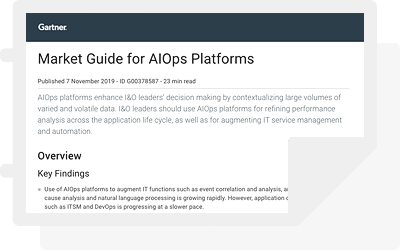It is fair to say that we live in a fast-paced, demand-driven world led by the cloud and high-speed internet. Operations that used to take days and hours, now take seconds and can be done via multiple channels and devices. From making instant bill payments or finding a long lost colleague, customers and users have applications to get almost anything done instantly. And, on top of that, there are so many companies offering great services out there, users and customers have endless options from which to choose. All this to say, expectations of impeccable, rapid service at any time of the day are growing.
Now, just imagine the following for a second. Take a payment service like VENMO, one that offers users instant small wire-transfers from any bank in the United States. What would happen if this company only operated Monday – Friday or kept having app outages during high usage times? The answer is probably obvious: due to expectations and competition options, users would seek a different instant payment service and stop using VENMO. The service downtime would lose the organization countless vital customers and potentially millions of dollars.
To combat this, smart companies are implementing operations at all levels to ensure they never have downtime and instead, continuously operate. Why? Because at the heart of every organization is one thing — a drive to meet customer or users’ expectations so that they return and spend more money. An enormously large undertaking considering the levels of operation and multiple outlets, it is only natural if you are feeling overwhelmed by the concept of continuous operations. In the following article, we will discuss the definition of continuous operations, why every organization needs to consider them, some challenges, and some key implementations.
What are continuous operations exactly?
Although the term “continuous operations” is made up of two commonly used words strung together, its combined definition might not come so easily when thinking in a business mindset. According to Investopedia, it is defined as “activities within a business or organization that are ongoing and sustained in the event of a business disruption. Continuous operations also refer to a firm running its business around the clock, with downtime only for maintenance and repair in manufacturing facilities.” It is essentially the implementation of systems to automate operations and allow a business to keep running, no matter what, without interruptions. Things like updates, releases, or disasters cannot interfere with operations. And, the implementation systems involved are things like backups technology, greater storage, AI, remote sites, 24/7 shifts, and more. It may seem like a costly and hard thing to do, and yes, at first it might be but once an organization finds the right innovations, it becomes second nature.
What are the benefits of continuous operations?
At this point, it is important to note that continuous operations are practices that can be applied to any industry. From manufacturing to chemical, financial, and more, everyone is adopting continuous operation strategies while seeing great benefits. However, for the purpose of this article, we will take a look at the IT industry and automation benefits.
Great output
Possibly the most exciting and biggest reason to adopt continuous operations is the fact that an organization can simply do more when they are running at full speed all the time. With a viable automation strategy in place, the tolls a system takes to stop, then start, then reconfigure backend or front end operations are diminished.
Minimize production costs
It is easy to assume continuous operations will be expensive, and the truth is, it might be, at first. However, once the right technology is in place costs will begin to drop. Investopedia mentions that “continuous operations encourage increased automation and the reduction of unnecessary labor, both of which lower the cost of production.” For example, let’s consider AI messaging. Once installed, the need to have someone always monitoring various messaging platforms is not needed. AI will cut the cost of having 24-hour call centers.
Great quality management
Bugs or glitches in a system that interfere with customer goals cause problems to usability as a whole are never good. Luckily with continuous operation strategies, the quality of what is put into the customer’s face is improved. Yes, that is right. Just as ayehu.com explains, “with a quality IT automation platform in place, all of these tools can be seamlessly integrated to create a fully automated environment. It also ensures that all of these tasks, processes, and workflows can be closely monitored and carefully controlled.” In the end, quality is managed carefully.
Reduction of loss
With a method in place to never have downtime, customers and users are ultimately happier with service. Also explained by ayehu.com, “Continuous operations mean the end-user remains blissfully unaware that upgrades are even occurring until they are able to enjoy the benefit of additional functionality and improved user experience that comes as a result.” This unawareness reduces the customer drop-off rate.
Some popular implementations to improve continuous operations
Automated AI messaging
Having the ability to message with customers and users at any time of the day is a vital part of continuous operations. Leveraging this technology will make an organization more valuable over time to the high demand for customer service in this fast-paced world. If a system is having an issue where help is needed, customers no longer have to wait thanks to the assistance of AI.
Cloud
When implemented correctly, the use of the cloud will ensure operations are continuous and seamless. Basic cloud-based platforms are location transparent, able to scale out, have services that work with other applications but are not locked in, and best of all, are automated. Of course, there are many other benefits to the cloud and running an organization with continuous operations, this is just a top line.
Second Server
Many organizations choose to run their platform on two servers, one that is live and one that is for DevOps. A system that is adopted in efforts to stop downtime as a whole, when a new implementation is deployed, the servers are switched and no one knows the difference. To learn more about this, read our article on Blue, Green Deployment.
What are the difficulties of continuous operations?
The biggest thing that organizations face when implementing continuous operations is achieving success from end-to-end. As an article from Devop.com explains, “The imperative now is one that centers on bringing continuous automation technologies to bear an end-to-end basis. In this way, they can facilitate the seamless integration from the business processes through the IT services supporting those processes and the delivery of applications to differentiate the business.” Simply put, if a newly implemented automation technology becomes standalone in one department, it will not function as it is needed for the entire organization.
A big difficulty many organizations are trying to overcome as we speak, end-to-end, is not the only challenge of continuous operations but also challenges with existing operations. As stated in an article from TechBeach, “operations may face challenges with existing platforms and tools, lack of skills, and cultural resistance. In some instances, continuous operations may even be the wrong choice, depending on the amount of change that needs to occur and the willingness of the organization to change.” However, with that said, determining the need for an organization to deploy continuous operations can begin with an analysis of downtime costs and careful consideration of the entire development process.
At the end of the day, making the move to continuous operations could be highly impactful to any organization–only if it is done correctly. So, go with a mind for the whole picture, not just parts of it, and explore the possibilities this method could bring.






